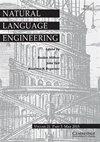一种波斯语的性别风格转换方法
IF 1.9
3区 计算机科学
Q3 COMPUTER SCIENCE, ARTIFICIAL INTELLIGENCE
引用次数: 0
摘要
文本风格转换的最新发展使这一领域比以往任何时候都更加突出。在转换输入文本的风格方面存在许多挑战,如流畅性和内容保存,这些都需要解决。在这项研究中,我们提出了PGST,这是一种在性别领域的波斯文本风格转移方法,由不同的组成元素组成。基于词性标签的意义,我们的方法首次成功地转移了波斯文本的性别语言风格。我们已经着手进行了用于标记替换目的的预训练单词嵌入,用于性别交换目的的基于字符的标记分类器,以及用于提取最流畅组合的波束搜索算法。由于在我们的研究中引入了不同的方法,我们确定了一个权衡值,用于评估不同模型在用转移文本伪造我们的性别认同模型方面的成功。我们的研究主要集中在波斯语上,但由于没有可用的波斯语基线,我们将我们的方法应用于一个经过高度研究的带有性别标签的英语语料库,并将其与最先进的英语变体进行比较,以证明其适用性。我们的最终方法分别以45.6%和39.2%的优势成功击败了英语和波斯语的性别识别模型。本文章由计算机程序翻译,如有差异,请以英文原文为准。
PGST: A Persian gender style transfer method
Recent developments in text style transfer have led this field to be more highlighted than ever. There are many challenges associated with transferring the style of input text such as fluency and content preservation that need to be addressed. In this research, we present PGST, a novel Persian text style transfer approach in the gender domain, composed of different constituent elements. Established on the significance of parts of speech tags, our method is the first that successfully transfers the gendered linguistic style of Persian text. We have proceeded with a pre-trained word embedding for token replacement purposes, a character-based token classifier for gender exchange purposes, and a beam search algorithm for extracting the most fluent combination. Since different approaches are introduced in our research, we determine a trade-off value for evaluating different models’ success in faking our gender identification model with transferred text. Our research focuses primarily on Persian, but since there is no Persian baseline available, we applied our method to a highly studied gender-tagged English corpus and compared it to state-of-the-art English variants to demonstrate its applicability. Our final approach successfully defeated English and Persian gender identification models by 45.6% and 39.2%, respectively.
求助全文
通过发布文献求助,成功后即可免费获取论文全文。
去求助
来源期刊

Natural Language Engineering
COMPUTER SCIENCE, ARTIFICIAL INTELLIGENCE-
CiteScore
5.90
自引率
12.00%
发文量
60
审稿时长
>12 weeks
期刊介绍:
Natural Language Engineering meets the needs of professionals and researchers working in all areas of computerised language processing, whether from the perspective of theoretical or descriptive linguistics, lexicology, computer science or engineering. Its aim is to bridge the gap between traditional computational linguistics research and the implementation of practical applications with potential real-world use. As well as publishing research articles on a broad range of topics - from text analysis, machine translation, information retrieval and speech analysis and generation to integrated systems and multi modal interfaces - it also publishes special issues on specific areas and technologies within these topics, an industry watch column and book reviews.
 求助内容:
求助内容: 应助结果提醒方式:
应助结果提醒方式:


